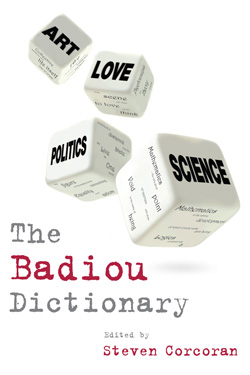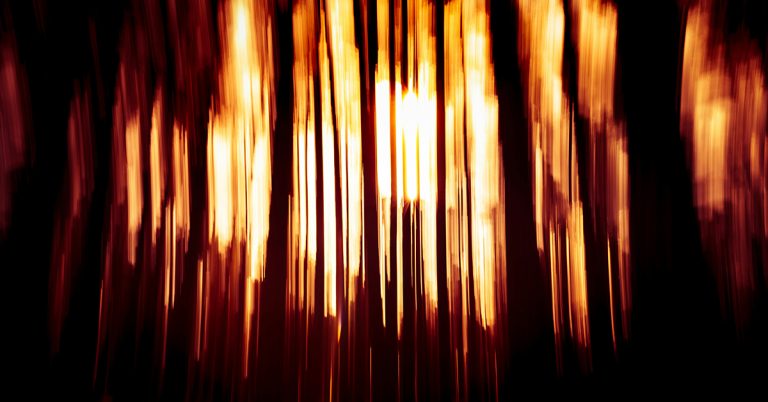

CINEMA by Pietro Bianchi and Bruno Besana
The systematic nature of Badiou’s theoretical edifice notwithstanding, cinema appears in his work as a spurious object, lacking proper conceptual localisation. Its status is repeatedly declared uncertain or more precisely ‘impure’. This is perhaps why, contrary to his extreme systematicity of approach, Badiou’s interventions on cinema are scattered over a large time span, dispersed in myriad film reviews, short articles and conferences, and for the main part are devoted to discussing one or several individual films, as evidenced by his recently published collection, Cinema.
At first glance Badiou seems to deal with cinema in the manner of a film critic, insofar as he discusses single problems, single films, and frequently detaches specific sequences from a film as a whole (e.g. the ending of Mizoguchi’s The Crucified Lovers and Rossellini’s Journey to Italy, and the scene of poetry reading in Wenders’ The Wrong Move). What is missing in most of Badiou’s texts on cinema is direct philosophical engagement with the question of cinema as a specific art form, in contrast to Deleuze’s treatment of it in his two volumes on cinema in the 1980s.
Yet far from being an idiosyncratic posture, this method is consistent with a philosophical approach to art that refuses to develop a discourse over a generalised field. Instead, Badiou is interested in the activation of localised truth procedures made possible by specific works of art, scientific marking points or political sequences under condition of which philosophy can think. It is no accident that Badiou, given his refusal of the notion that philosophy’s aim is to discuss the essence of art or what art in general should be, completely dismisses the term ‘aesthetics’, understood as a regional application of philosophy to the field of art. Badiou’s neologism ‘inaesthetics’ names both the deactivation of aesthetics (understood in the aforementioned sense) and the attempt to name the intra-philosophical consequences produced by singular, specific works of art (cf. inaesthetics).
In accordance with his ‘inaesthetics’, art is not a understood as a field, as a general object of philosophical reflection, but rather as a condition, i.e. as a set of singular works able to produce intra-philosophical consequences, and hence able to activate philosophy.
Yet in a few passages (see esp. HI, Ch. 8: 78) Badiou does come close to discussing cinema as such: if discussing the generality of the philosophical relevance of art per se is foreclosed, cinema as a whole nonetheless receives a description. Cinema, according to Badiou, is an impure art, insofar as each single film is lost in a sort of indistinction between art and non-art. This indistinction also points towards a certain necessity to decide, namely to the fact that, ultimately, art’s ability to produce singular truths is decided work by work.
The possibility that truth has to appear proceeds in cinema on the basis of a qualification that runs contrary to Deleuze’s definition of cinema as the immediate expression of pure movement. For Badiou, in fact, cinematic ‘movement is held up, suspended, inverted, arrested’ (HI 78), as if it were an almost static form of art. Cinema also does not create or manifest something within the visible; rather it ‘withdraws’ from the visible. Badiou’s counterintuitive definition aims at understanding the very act of framing as a separation, as a cut from an already existing visible. Cinema, then, does not create a ‘visible’ or enhance visibility but is instead ‘a controlled purge of the visible’. He clarifies the reason for this definition shortly afterwards: ‘the flowers cinema displays (as in one of Visconti’s sequences) [are] Mallarmean flowers [. . .] absent from every bouquet’; what is shown on the screen is ‘both their singularity and their ideality’ (ibid.). In a typically anti-mimetic move, Badiou believes that cinema, far from representing what is already (in the) visible, should empty out the particular concreteness of the represented image. The singularity of the object incarnates an ideal aspect exactly – as in the Mallarmean object – on account of its subtractive capacity to undo the ‘naturalised’ habits via which perception is normally organised.
But if painting or poetry can call on many resources to perform such an operation, the position of cinema is far more problematic:
To write a poem you need pen and paper [. . .] To paint a picture, you also begin with an absence, a surface [. . .] But beginning a film is not at all the same. The conditions of production of the movement-image or the time-image involve a unique assemblage of materials. You need technical resources, but you also need to marshal extremely complex and, above all, heterogeneous materials. For example, you need locations, either natural or constructed ones; you need spaces; you need a text, a screenplay, dialogues, abstract ideas; you need bodies, actors; plus you’ll need chemistry, and editing equipment. (Cin 225–6)
In contrast to other art forms, cinema is encrusted with a wide variety of elements that belong to the ‘state of a particular situation’, not to mention the latter’s structural proximity with the capitalist entertainment industry. For cinema to isolate from these myriad elements the ideal flowers ‘absent from every bouquet’, far greater effort is required. Further complicating this is the fact that no single artistic agency controls any film from beginning to the end. Remaining is a confused mixture of heterogeneous forms of art (theatre, photography, music, literature, painting) and contradictory tendencies. But this difficulty is not merely contingent. In fact, although it would technically be possible to make a film using minimal elements and resources, outside the control of big studios, the thing that gives filmmaking such a problematic standing would remain: movement itself.
For in art the idea operates by fixity: it cuts within a transient mixture of empirical elements, of confused sensations and semantic equivocity. The eternity of the idea is thus nothing but the void of a fracture that interrupts customary modes of perception and recurrent modes of organisation of sensible material. For this reason, the idea always returns as identical to itself, qua void of any positive content, qua pure capacity of subtraction in a given mode of presentation and circulation of phenomena. Hence the flower cannot but be the absent one, as subtractive presence in a determined, situated bouquet the presence of which carves an inconsistency in the current modes of organisation and perception of what a bouquet of flowers is. If cinema, as any art, presents this operation, at the same time, being essentially inseparable from a myriad of movements, it also constantly erases such operation, and therefore constantly erases the idea. In cinema the idea is thus reduced to an ephemeral passage: ‘cinema is an art of the perpetual past. [It] is visitation: the idea of what I will have seen or heard lingers on to the very extent that it passes’ (HI 78). Cinema is the art of the temporary transition of the Idea, not of its specific and rigorous localisation: the permanent localisation of truth is simply contradictory to the definition of movement-image itself.
But this separate role of cinema is also, conversely, that which places it in a crucial position in relation to all arts: lacking a specific form of truth, the practice of filmmaking implies all the other arts. More precisely, in cinema all arts are simultaneously present and are emptied out from within (‘[it] is always in a defective relation to one or several among the other arts’ (86)). In Visconti’s Death of Venice, for example, the theatrical opacity of the acting features of Dirk Bogarde is combined with the pictorial themes of Canaletto, the literary atmospheres of Proust, the echoes of the subtle uncertainty of Henry James’s heroes and the melancholic flavour of Mahler’s music. But if all these elements amplify each other, they also ‘corrode one another in a sort of decomposition by excess’.
This means, first, that even in the most skillfully orchestrated composition of elements, as with Visconti, ‘the formalist path, which leads to supposedly “pure” filmic operations’ cannot but be an impasse, and leads back to ‘impurity’. In the cinematographic territory stretched between art and non-art, the Idea, unable to be presentified in its absence, can only pass through and pass, with each film constantly falling back into impurity. But, second, it is important to note that, when Badiou acknowledges the passage of the Idea in some specific filmic sequences, this occurs at the very peak of art’s impurity, within the very arrangement of a film as the Kampfplatz of the other various arts. Analysing the opening sequence of Visconti’s rendering of Mann’s Death in Venice, Badiou observes:
Let us suppose that, in this instance, the idea is the link between amorous melancholy, the genius of the place, and death. Visconti arranges (or ‘edits’) the visitation of this idea in the space within the visible that is opened up by melody. This takes place to the detriment of prose, since here nothing will be said, nothing textual. Movement subtracts the novelistic from language, keeping it on the moving edge between music and place. But music and place exchange their own values in turn, so that the music is annulled by pictorial allusions, while every pictorial stability is conversely dissolved into music. These transferences and dissolutions are the very thing that will have ultimately constituted the Real of the idea’s passage. (HI 80)
When an art plays against another in a given sequence, the subtractive force of art emerges within the confused mixture of impure arts that operates on the screen. Here the confused, transient nature of the film is blocked by a series of subtractive operations. Hence a certain immobility – equivalent to the visitation of an idea – is produced by the very movement of cinema, which therefore exposes itself neither as mere movement, nor as mere immobilisation, but instead as ‘false movement’. Such ‘false movement’ is the very form of the ephemeral visitation of the idea; it is that which constitutes cinema as nothing but a peripheral art (even more, an art whose movements constantly erase the ideas that perform such acts of suspension or neutralisation). But, at the same time, this ‘false movement’ demands the mutual conflict of all the other arts, and thus constitutes cinema as a pivotal art, that restlessly articulates the totality of the other arts by organising a series of (ephemeral) subtractive points.
Even so, for Badiou cinema remains farthest from the ideal form of a condition. When in MP Badiou lists philosophy’s four conditions (MP 35), he mentions, as the model for all artistic practice, the ‘poem’, and more specifically Mallarme, who occupies a rather crucial role in Badiou’s philosophy. If Badiou tends to privilege art based on literality, rather than on the empirical imaginary of vision, this is not only due to its proximity with mathematics (‘like mathematics, poetry is language reduced to the strict presentation of presentation’ (Hallward 2003: 197)) but also to the relation that the poem entertains with the state of a situation. Against all approaches to poetry and art as a form of access to the thing-in-itself in all its sensuous plenitude, Badiou believes that poetry – and especially avant-gardist poetry, where the materiality of the signifier is the most distant from any possible signification – is able to operate a cut in the habits via which material existence is perceived and organised. Mallarme’s poetry is a model of subtraction from the confusion of experience, the poem working as an operator of separation that disjoins all relations and interrupts the continuity of the imaginary. Devoid of empirical reference, poetry detaches language from the regime of presence and maintains active or alive that ‘nothing’ (BE 192) – radically singular, pure action – which would otherwise fall back into sheer nullity.
Discussing Mallarme’s L’Apres-midi d’un faune, Badiou writes:
The wind and the water are nothing when compared with the power that art possesses to stir up the idea of water, the idea of wind [. . .] Through the visibility of artifice, which is also the thinking of poetic thought, the poem surpasses in power what the sensible is capable of itself. The modern poem is the opposite of mimesis. In its operation, it exhibits an Idea of which both the object and objectivity represent nothing but pale copies. (HI 21)
Although explicitly Platonic, this passage does not equate the empirical realm with a ‘pale copy’ of ideas, but with a pale copy of what the idea is capable of. The idea of wind is absent from any given wind not because it would be an in-se that never manifests itself, but because it is exactly the gap of fracture within any given manifestation, understanding, classification or usage of a wind. Therefore ‘the classical maxim par excellence is: “the true is sometimes not the likely” ’ (ibid.). In relation to this radically antimimetic paradigm, cinema presents an unsurpassable limitation, insofar as it is too entangled with the reproduction of the sensible: cinema, because of its technical properties, reproduces reality all too well, it is strictly bound to a mimetic reproduction of reality, thus rendering the operations of subtraction from the state of the situation extremely difficult. Films cannot but fall again and again within the consistency of the situation in which they appear.
Cinema is a mass art [. . .] because it shares the social imaginary with the masses. Cinema’s starting point isn’t its history but the impurity of its material. This is why cinema is a shared art form: everyone recognises contemporary imagery in a film. (Cin 230)
But if cinema is in a way homogeneous to the empirical situation in which it takes place (hence Badiou’s particular insistance on commercial films, whereas he spends little time analysing avant-garde and experimental cinema), at the same time its weakest point is inseparable from the possibility of its redemption. In fact, it is precisely the very same characteristics that make cinema a non-art (or a liminal art constantly moving or falling out of art) that ground the possibility it has to to perform a certain subtractive movement, albeit exposed in the evanescent mode of a visitation. In fact, being the most impure form of art, constantly falling again within the regularity of the (commercial, political, communicational) situation to which it belongs, cinema not only allows for the passage of an idea (via the articulation of a set of arts) but is also able to effectuate an intervention in the state of the situation in an extremely immediate and effective way: such specific, albeit thwarted localisation, is ultimately what grants it its relevance.
In the uninterrupted course of non-events that define the state of a situation, cinema is able, if not to operate a subtraction, then at least to immobilise the stream of non-events present at the centre of the social imaginary of the masses. Bound to a movement that refuses its permanence within the stabilised realm of art, cinema conversely performs – as the language adopted by Badiou shows – a series of arrests, interruptions, blocks: ‘the impurity of the Idea is always tied to the passing of an immobility or to the immobility of a passage’ (HI 88). Essentially bound to movement, and therefore constantly dragged out of art, cinema is nonetheless characterised by a movement of immobilisation, which is constantly negated by the impurity of its own forms. A twofold ‘false movement’ that, on the one hand, is composed by a series of acts of interruptions of the movements of the present, and, on the other, is constantly doomed to ephemerality.
In this sense one sees how the Godardian technique of ‘dirty sound’ – which Badiou reads as an attempt at a formal purification of the permanent rhythmic background that accompanies every activity – is obtained by producing an ‘adulterated murmur’, and hence an intensification of sounds (Cin 140). Or again, one sees how the use of long car sequences in Abbas Kiarostami’s Taste of Cherry turns the typical Hollywood imaginary of speed and uninterrupted action into a sign of slowness, ‘constraining what is an exteriority of movement to become a form of reflexive or dialogic interiority’ (ibid.), and does so by reintrojecting this turned sense within the very imaginary of which it is an interruption. Or again, one sees how the re-articulation of the ideological injunction to exhibit sexualised bodies in the abstract pornographic scenes of Godard’s Sauve qui peut (la vie) (English title Every man for himself) does not turn away from pornography, but rather reinjects the latter’s interruption into the pornographic exhibition of bodies. It can thus be said that cinema’s thwarted movement is based on ephemeral acts of interruption, acts that interrupt the movement and order of a situation only by constantly falling back into it. But this constant falling or failure both provides the place, constantly subtracting itself from art, for a subtractive relation between arts, and constantly re-inscribes this subtractive activity within the very situation from which art marks its own distance.
CINEMA is an extract from The Badiou Dictionary edited by Steven Corcoran, published by Edinburgh University Press.
Pietro Bianchi is PhD candidate in Romance Studies at Duke University. His first book Jacques Lacan and Cinema: Imaginary, Gaze, Formalisation is forthcoming with Karnac.
Bruno Besana has taught philosophy at Paris VIII and Bard College, Berlin. He is the author of several articles on contemporary philosophy and a translator from French and English into Italian. He is an alumnus of the ICI Kulturlabor Berlin and of the Jan van Eyck Academie, Maastricht, and a founding member of the Versus Laboratory collective.
Abbreviations
BE = Being and Event
Cin = Cinema
HI = Handbook of Inaesthetics
MP = Manifesto for Philosophy





